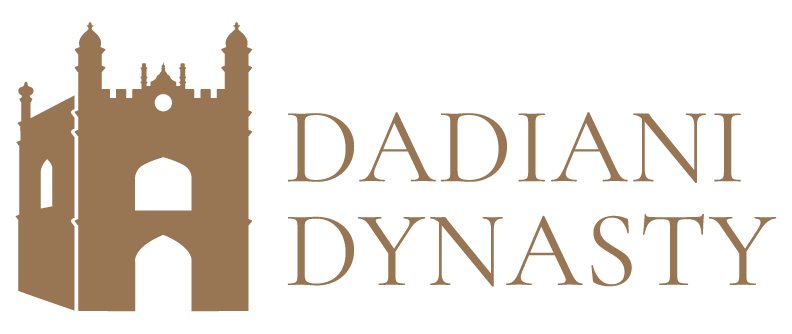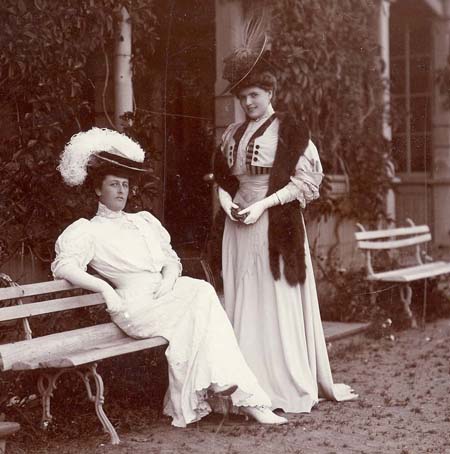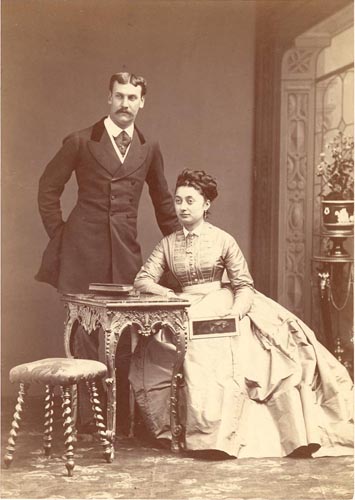Lucien Charles David Murat (1870-1933) was the first child of Achille and Salome. He was born in Mustafa, Algeria, studied at Oxford, and received a degree in agricultural studies, becoming a winemaker like his father. In 1897, two years after father’s death, he married Mary de Roan Shabo at Saint Francis Xavier’s Church in Paris. Mary was gifted painter and had her own studio in Paris, which served as guest house for visiting art lovers. Lucien was unhappy with Mary’s determination to pursue her own career, and in 1906, he left her in Paris and returned to his mother’s homeland of Samegrelo with their son, Achille. After the Bolsheviks took Georgia, Lucien was captured and spent two years in Soviet prisons. Upon his release, he returned to France. He later settled in Morocco, where he died in 1933.
When his parents separated, Achille Napoleon Murat (1898-1987), the only child of Lucien and Mary, moved to Samegrelo at the age of eight with his father and spent the next ten years there. Returning to France in 1916, he trained as a military aviator and became an accomplished pilot. But because he spent so many of his formative years in Samegrelo, he always identified closely with his grandmother Salome’s Georgian heritage, and after World War II, he sought to return to Georgia. Unfortunately, the Soviet government would not grant him a visa. Remaining in Paris, he often wore the chokha(Georgian national dress) as a sign of respect for his cultural roots. In 1965, he was finally allowed to enter Georgia by the Soviet authorities and visit sites such as his grandfather Achille’s tomb. Knowing that he would most likely die and be buried in France, he soiled his clothes with earth from his ancestors’ garden, and asked to be buried in these clothes.
The second son of Salome Dadiani and Achille Murat was named Napoleon Luis Achille Murat (1872-1943), and came to be widely known by his nickname, Napo. Born in Bruno, France, he returned to Georgia in 1901 and joined the Russian army, becoming renowned for his riding skills. In 1904, he fought in the Russo-Japanese war, where he received six medals for courage. After a brief spell in retirement in the United States, he returned to Georgia to fight in World War I as a member of the so-called “Wild Division ,” in the course of which he was injured and commended for bravery with the 3rd Grade Order of Saint Vladimir. (Napo’s exploits in this conflict are described in Nikolas Brechko’s book , Wild Division.) Following the Soviet takeover of Georgia, Napo fled to France, where he died in 1943; he is buried in Nice. In some ways, Napo’s life and character resembled those of his uncle, Andria Dadiani. Like Andria, Napo never married and seemed to revel in an unconventional, unsettled lifestyle.
Antoinette Katherine (Bebe) Murat (1879-1954) was the third and youngest child of Salome Dadiani and Achille Murat, and the one about whom the least is known. The first director of the Dadiani Palace Museum in Zugdidi, who knew her, recalled that she was a very kind woman. She lived in the Salkhino Palace from 1918-1921 during the brief period of Georgian independence, and was trapped there when the Red Army marched into the region. With the building surrounded, Antoinette ordered her children—who were armed and wanted to defend their ancestral home—not to resist. Instead, she emerged from within and calmly implored the soldiers to take whatever they wanted, but not to harm anyone. The palace was occupied without violence, and Antoinette left Georgia. Like her brother Napo, she settled in Nice, France, where she died in 1954.


